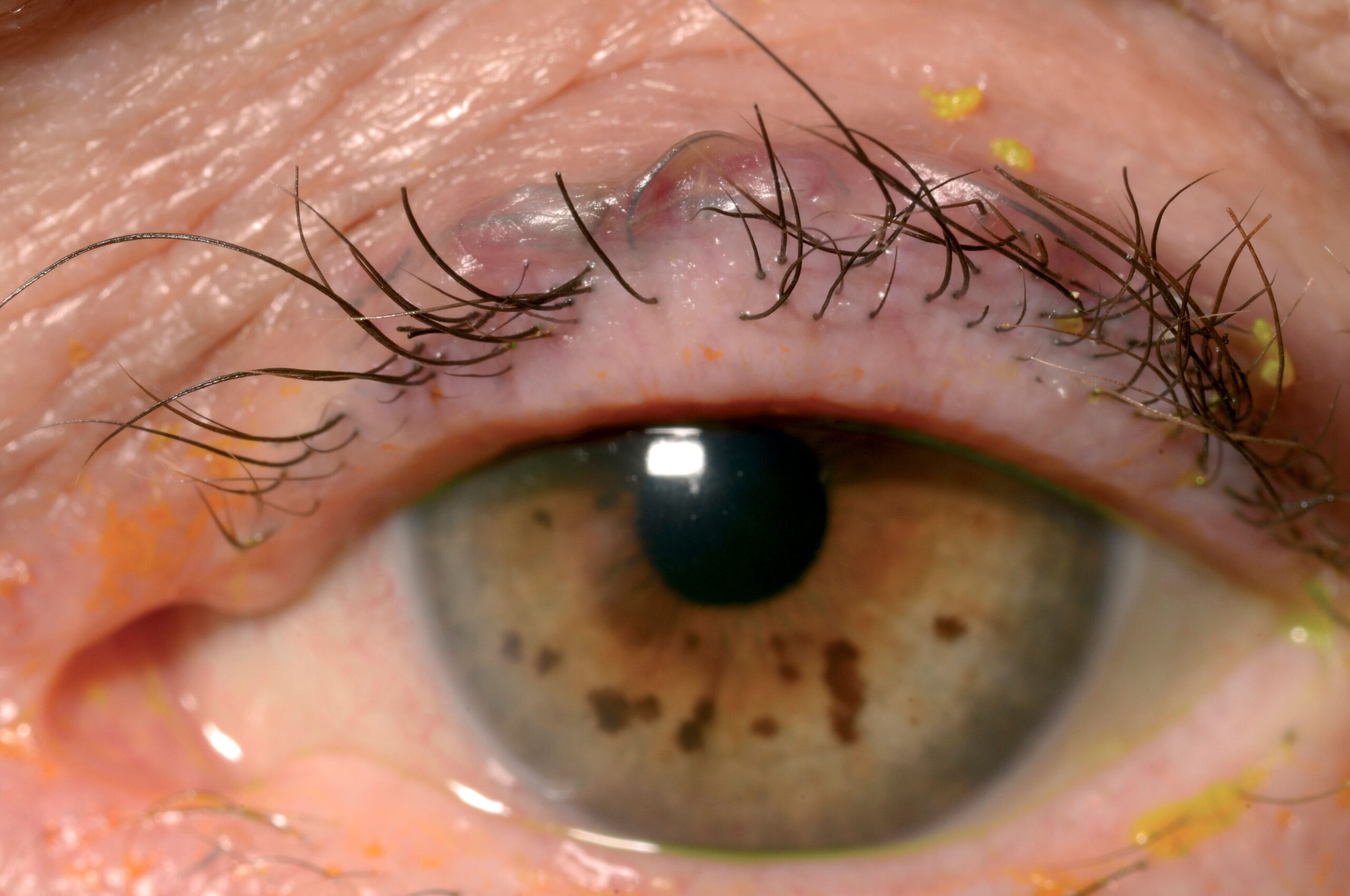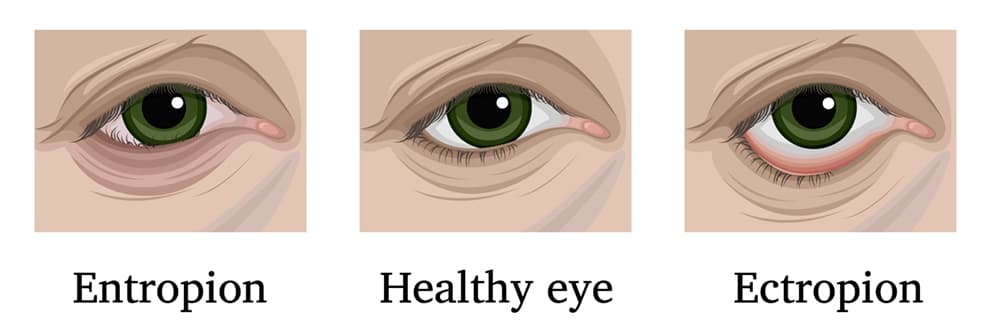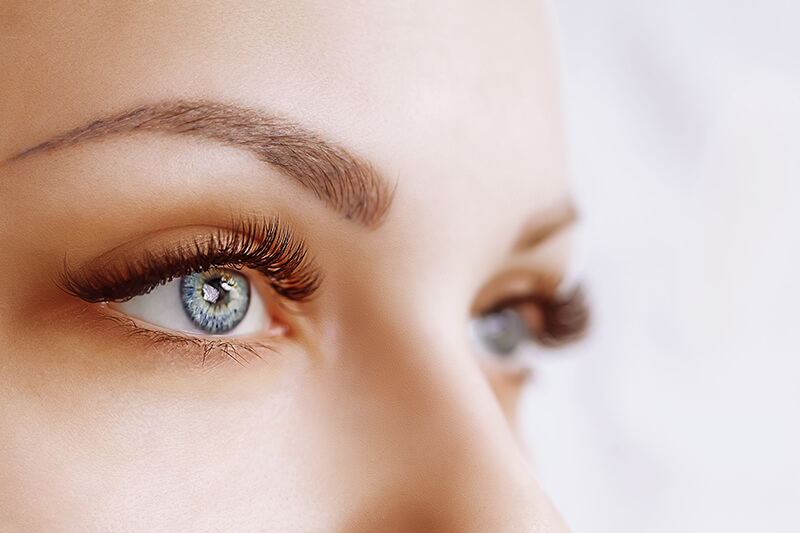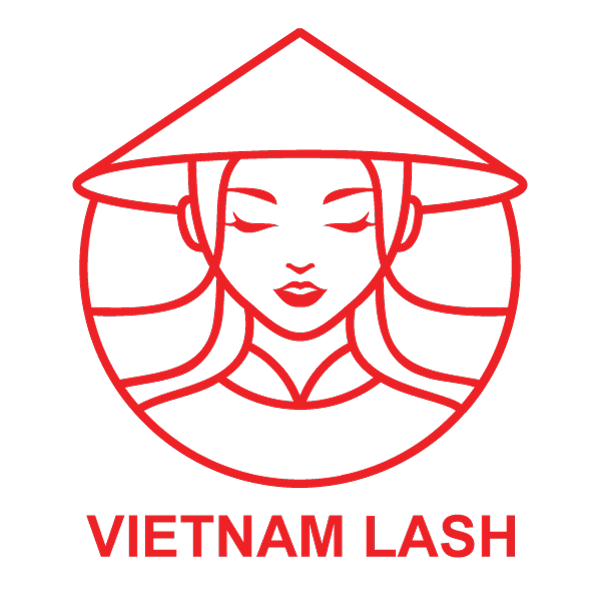If our eyes are the windows to our souls, then taking care of the curtains, or the eyelashes, is something we should do. We often forget to consider the health of our eyelashes aside from mascara’ benefits. However, we must, since eyelashes not only make us look fine when they are well-treated, but they also shield our eyes from factors in the outside world.
Don’t you know that any of us may get an ingrown eyelash? You’ll understand how annoying it can be if it’s ever occurred to you. The treatment for ingrown hair on eyelid will be covered in the section that follows. But first, let’s jump into the discovery of causes behind an eyelash growing under eyelid, as well the symptoms going with such an eyelash condition.
What Is Ingrown Eyelash?
Probably a picture of an ingrown hair that is trapped and developing under the skin comes to mind when you think of an ingrown hair. Although it’s unusual, this can happen to eyelashes. An ingrown eyelash, on the other hand, refers to that lash which emerges through the skin in the opposite direction – that is, toward the eye.

An ingrown eyelash (trichiasis) is a frequent condition of the eye that results in aberrant lash growth. An ingrown eyelash grows inward toward the eye rather than outward and might feel like a needle piercing into your eye since eyelashes are typically quite coarse. This may hurt and irritate you. An untreated ingrown eyelash can even cause damage to your eyes.
An ingrown eyelash often affects either the upper or lower eyelids, and are more prevalent in adults. Since ingrown hair on eyelid rubs against your eyes, causing the following symptoms: eye pain, irritation, irritated eyelids, eyelid swelling and inflammation, watery, itchy, red eyes, photophobia, a gritty feeling in the eye, eye infections (stye-like bump on the edge of eyelid), eye discharge (mucus or pus), blurry vision, and even vision loss (in severe cases).

What Causes Ingrown Hair On Eyelid?
Most of the time, trauma, inflammation, or conditions affecting the eyelid are the main cause of an ingrown eyelash. There are also over-the-counter remedies for the symptoms, but the practice of removing it is the only way to effectively treat trichiasis, and stop severe pain and irritation to a significant extent.
Blepharitis is another common reason for an ingrown eyelash. The germs on your face, skin diseases ( dandruff or rosacea), blocked oil glands, allergies, less frequently, eyelash mites, and so on, can all contribute to blepharitis and eyelash growing under eyelid.
Styes, painful, red pimples on the eyelid brought on by an infection, are still another offender. Any kind of inflammation of the eyelids does affect the skin around your eyes and even affect how your natural eyelashes grow in the long run if not timely treated.
The eyelashes may grow improperly or in the wrong direction due to other eye diseases like
1. Ectropion
A condition when the eyelid loses its natural suppleness and flips or folds in. Adults are more likely to experience this, which is frequently correlated with aging or obesity.
2. Injury
The eyelash’s position may change and grow inward if the eyelid is ripped or damaged. That is to say surgical repair of a damaged eyelid will also result in an ingrown eyelash.
3. Distichiasis
This disorder causes an extra row of eyelashes to grow and develop inside, scraping against your eye.
4. Entropion
When this happens, your lashes rub against the eyeball as the eyelid turns inward. Entropion will damage your cornea and leave scars if it continues. Inflammation has a side effect which is just like that.
5. Developmental Changes
As a child grows, the shape of their lashes and hair follicles may momentarily shift. Trichiasis as a result is typically transient.
How To Remove An Ingrown Eyelash?
There can be a corneal abrasion, or scratch or scrape of the cornea, any time you suffer eye pain. Checking with a medical professional who can offer an eye specialist to you is a smart idea. Once your ingrown eyelash is identified, they can check the cornea for scratches.
Depending on the extent of the afflicted eyelid, an ingrowing eyelash can then be treated in a variety of methods. In the section below, we have included a list of available treatments

1. Epilation
Using a pair of eyelash tweezers, anyone can perform this. Online or through GP, you’ll have a list of the branches that provide this treatment. Unfortunately, since eyelashes regrow eight weeks apart, plucking (or epilation) is always vital. Some people found after routine plucking, their lashes do grow back completely or less often.
2. Surgery
Your doctors can remove the problematic area and individual eyelashes with a delicate metal device if an ingrown eyelash only affects a small portion of your eyelid. They will cut up your eyelid to expose the eyelash roots and freeze them to prevent them from growing back, only if a bigger portion of your eyelid is damaged.
The name of this process is cryotherapy, and your eyes’ color may change, and the edge of your eyelid may appear a little crooked. After all, you’ll be made sure not to experience any pain or discomfort prior to every procedure, although you may still feel a touch or a sense of pressure.
3. Electrolysis
Only when there are a few ingrown eyelashes is electrolysis a lasting solution to inhibit the regrowth of your ingrown eyelash. Your doctors will wait to make an electrolysis appointment if you recently plucked your eyelashes since the procedure can only be performed on visible lashes. For the eyelashes growing into eye to be permanently removed, the surgery is done multiple times, typically two to three rounds.
4. Ingrown Eyelash Removal
You can use electrolysis to get rid of an ingrown eyelash. To stop the hair from growing back, a physician will electrically harm the follicle, which can take several rounds. Only 19% of the targeted eyelashes returned after laser hair removal with a success rate of 81%. Electrolysis had a 49% first-time success rate, with 63% of the eyelashes growing back.
5. Bandage Contact Lens
To speed up the healing process and shield the cornea from unattended ingrown eyelashes, a soft bandage contact lens can be placed on the eye of the patient.
You may suffer more or less discomfort and a longer or shorter healing period depending on the treatment you choose to receive or not. It’s likely that certain treatments are more painful than others, and even take a longer period of time for the patient to recover.
FAQs
1. Do Ingrown Eyelash Surgeries Come With Risks Or Side Effects?
You might suffer some little swelling, bruising, and pain around your eye – these side effects can be treated with paracetamol. Since there is a slight chance of infection, you should use an antibiotic drop or cream for a few days, following the surgery. If the roots weren’t entirely removed after your operation, your ingrown eyelash may come back. You would need more surgery or medical care, as a result, if that happened.
2. What Items Can Be Used To Treat Mild Cases Of Ingrown Hair On Eyelid?
Eye drops (ideally with medium to high thickness to ensure they successfully remain on your eye), ointments (which work well to protect the eye at night while sleeping but blur the vision during the day), or a warm compress, which can provide relief, can be used to deal with mild cases of an ingrown eyelash at home.
3. How To Prevent An Ingrown Eyelash From Occurring To Lashes?
Taking care of your eyes does help reduce the chance of getting an ingrown eyelash. Those eye health habits include using gentle, non-irritating products (face wash and shampoos) as well as washing your face often, avoiding touching your face or eyes, washing your contacts frequently, and, especially, not wearing them for too long.
Conclusion
It can be very painful and irritating to have an ingrown eyelash which is a common eye issue. Although the aforementioned at-home and over-the-counter remedies are a choice, getting it removed via professional medical assistance is still the best way to treat it.
An ingrown eyelash can be removed at home, though it is not a long-term fix. At least every three months, your eyelashes tend to regrow. And for a more long-lasting fix, you must seek professional help if the lash condition of trichiasis is still there.

 +84 862 765 053
+84 862 765 053